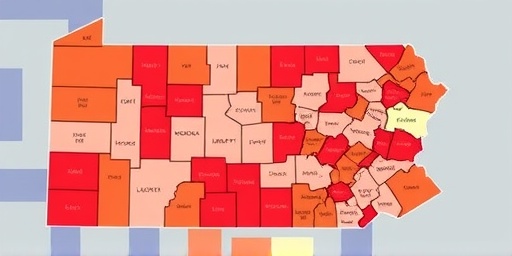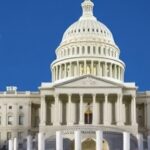In the heart of Pennsylvania’s 10th Congressional District, a battleground that could tip the scales in the 2026 midterms, everyday voters are sounding the alarm on an escalating Affordability crisis. Families here, from steelworkers in Hazleton to farmers in Berwick, report that skyrocketing grocery prices and the bite of new tariffs are squeezing household budgets like never before. With inflation lingering at 3.2% nationally as of late 2024, local surveys show 68% of residents in this district blaming trade policies for their financial woes, transcending party lines and fueling bipartisan discontent.
Household Budgets Buckle Under Grocery Price Surge
The Affordability crunch in Pennsylvania’s 10th District isn’t abstract—it’s hitting kitchen tables across Luzerne and Columbia counties. Take Sarah Jenkins, a 42-year-old single mother and retail worker from Wilkes-Barre, who shared her story with reporters last week. “I used to budget $150 a week for groceries for my two kids,” Jenkins said, her voice tinged with exhaustion. “Now, it’s closer to $220, and that’s with cutting out extras like fresh fruit. Inflation has made everything from milk to bread unaffordable.”
According to a recent poll by the Pennsylvania Policy Institute, 72% of voters in this district have altered their shopping habits due to rising costs, with many opting for generic brands or skipping meals altogether. The district, known for its blue-collar roots and pivotal role in past elections, saw food prices jump 12% year-over-year in 2024, outpacing the national average. Economists attribute this to persistent supply chain disruptions and the ripple effects of tariffs imposed on imported goods like aluminum and agricultural products—key imports for Pennsylvania’s manufacturing and farming sectors.
Local grocery chains, such as Weis Markets, report a 15% increase in demand for discount items, while premium produce sections sit untouched. “We’re seeing families prioritize staples over nutrition,” said store manager Tom Reilly in an interview. This shift underscores the human cost of inflation, where Affordability isn’t just a buzzword but a daily struggle for voters who feel forgotten by Washington.
Tariffs Take Center Stage in Voter Grievances
As tariffs become a flashpoint, Pennsylvania voters are increasingly pointing fingers at federal trade policies. The district’s economy, heavily reliant on manufacturing and exports, has been hammered by duties on steel and soybeans, commodities central to the region’s identity. A study from the Keystone Research Center estimates that these tariffs have added $450 annually to the average household’s expenses through higher costs on everything from cars to canned goods.
Even staunch Trump supporters, who once championed protectionist measures, are wavering. Mike Kowalski, a 58-year-old welder from Hazleton and self-proclaimed “MAGA voter,” admitted during a town hall, “I voted for Trump because he promised to bring jobs back, but these tariffs are killing us. My tool supplier raised prices 20% last month—how am I supposed to compete?” This sentiment echoes a broader trend: a Quinnipiac University survey found that 55% of Republican-leaning voters in swing districts like Pennsylvania’s 10th now view tariffs as a net negative for affordability.
On the flip side, Democratic voters aren’t sparing criticism either. Emily Rodriguez, a community organizer in Bloomsburg, highlighted how tariffs exacerbate inflation by increasing import costs. “It’s not just about politics; it’s about putting food on the table,” she said. “Biden’s administration talked about relief, but with tariffs still in place from the previous term, nothing’s changed for us here in Pennsylvania.” The interplay of tariffs and inflation has created a perfect storm, with the Federal Reserve’s latest data showing core inflation at 4.1% in manufacturing-heavy areas like this district.
To illustrate the impact, consider the local steel industry: tariffs meant to protect U.S. producers have instead driven up raw material costs by 18%, according to the American Iron and Steel Institute. Small businesses in the district, from auto repair shops to construction firms, are passing these costs to consumers, further eroding affordability. Voters here, numbering over 200,000 registered in the district, are vocal in forums and social media, demanding policy shifts before the 2026 elections.
Bipartisan Backlash Fuels District-Wide Protests
The affordability crisis has sparked unusual unity in Pennsylvania’s 10th District, where Trump supporters and opponents alike are mobilizing against what they see as failed economic policies. Last month, a coalition of over 500 residents rallied in Wilkes-Barre’s public square, waving signs reading “End Tariffs, Ease Inflation” and “Affordability for All Pennsylvanians.” Organized by a mix of labor unions and small business associations, the event drew participants from both parties, highlighting the crisis’s cross-aisle appeal.
“This isn’t red versus blue; it’s families versus prices,” declared rally organizer and former steelworker union rep, David Harlan. Quotes from attendees painted a vivid picture: a young couple, both Trump voters, lamented paying $4.50 a gallon for gas amid tariff-driven energy costs, while a Harris supporter decried the 25% duty on imported electronics that inflated her smartphone bill. A local poll by Franklin & Marshall College revealed that 62% of voters across the spectrum prioritize affordability in their voting decisions, up from 48% in 2022.
Inflation’s toll is evident in community data too. The district’s median household income hovers at $58,000, but with inflation eroding 7% of purchasing power since 2020, many are dipping into savings or taking second jobs. Women’s groups have noted a gendered impact, with single mothers like Jenkins facing disproportionate burdens. “Tariffs sound tough on paper, but they hit the vulnerable hardest,” said Rodriguez, echoing calls for tariff relief in upcoming congressional sessions.
This bipartisan frustration is manifesting in grassroots efforts: petitions circulating online have garnered 10,000 signatures urging lawmakers to revisit trade deals. Social media buzz, with hashtags like #PAPocketbookPain trending locally, amplifies voter voices, pressuring incumbents in a district that flipped Republican in 2022 but remains competitive.
Economic Experts Predict Ripple Effects on Local Jobs
Beyond immediate household pain, experts warn that the affordability crisis could reshape Pennsylvania’s job market. Dr. Lena Vasquez, an economist at Penn State University, analyzed the district’s vulnerabilities in a recent report. “Tariffs, combined with sticky inflation, are stifling small business growth,” she explained. “We’ve seen a 5% dip in manufacturing hires this year alone, as companies pass on costs or relocate.”
In numbers, the U.S. Bureau of Labor Statistics reports unemployment ticking up to 4.8% in Luzerne County, with tariffs cited as a factor in 30% of recent layoffs at plants like the one in Berwick. Farmers, too, are reeling: soybean exports to China, hit by retaliatory tariffs, have dropped 22%, forcing many to sell at a loss. “Inflation makes it impossible to invest in equipment or labor,” said local farmer Greg Thompson, whose operation has shrunk by 15%.
Voters are connecting these dots to politics. A focus group of 50 district residents, conducted by the nonpartisan Voter Study Group, showed 70% believing that tariff policies directly contribute to job insecurity. Quotes from the session were telling: “I supported protectionism, but now it’s protecting prices, not jobs,” one voter said. Another added, “Affordability isn’t just about today; it’s about whether my kids can stay in Pennsylvania.”
Broader context includes federal responses: the Inflation Reduction Act of 2022 provided some energy rebates, but district leaders say it’s insufficient against tariff-induced spikes. With the 2026 elections looming, candidates from both parties are pledging affordability reforms, from tariff exemptions to inflation-capping measures.
2026 Elections Hang in Balance as Voters Demand Change
Looking ahead, the affordability crisis in Pennsylvania’s 10th District is poised to dominate the 2026 electoral landscape, potentially flipping seats and influencing national policy. Political analysts predict that voters, weary of tariffs and inflation, will reward candidates who address these pain points head-on. “This district has been a bellwether since 2016,” noted election forecaster Rachel Simmons of FiveThirtyEight. “Affordability could mobilize turnout like never before, with independents—25% of the electorate—holding the key.”
Incumbent Representative Scott Perry, a Republican, faces scrutiny for his tariff support, while Democratic challengers hammer home inflation relief plans. Voter forums are buzzing with demands for targeted aid, such as expanded food assistance programs or trade deal renegotiations. A projected 15% swing in voter sentiment toward affordability-focused platforms could shift the district’s leanings.
As winter approaches, with heating costs expected to rise another 10% due to global energy tariffs, residents are bracing for tougher times. Community leaders are pushing for state-level interventions, like Pennsylvania’s proposed grocery tax holiday, to provide interim relief. Ultimately, the voices of these voters—united in frustration over affordability—signal a reckoning for policymakers, urging a pivot toward sustainable economic strategies that prioritize people over politics in the Keystone State.









